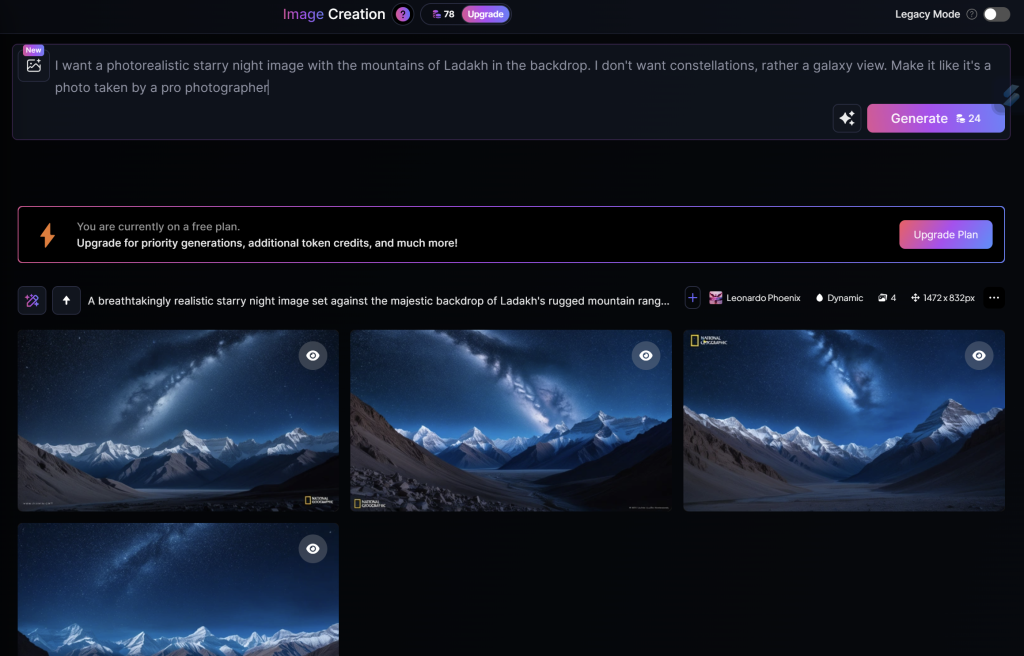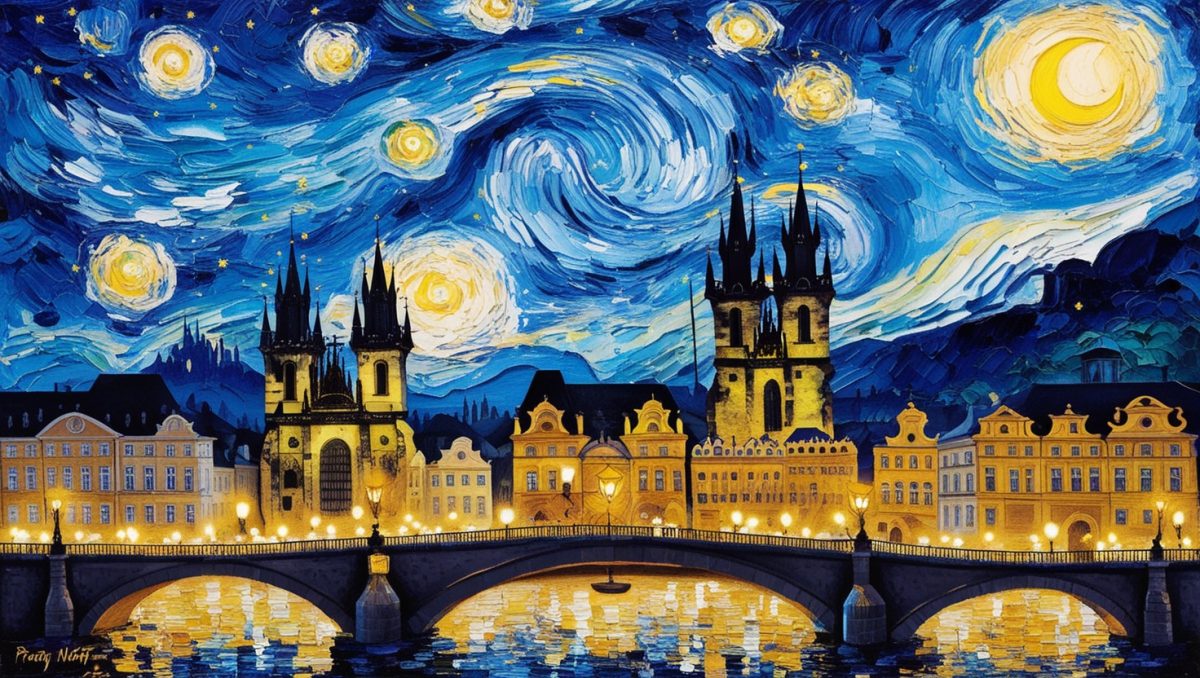I’ve recently been diving into the world of AI art, and I have to say—it’s pretty exciting! There’s something fascinating about typing out a few words and watching AI turn them into art. As a fan of starry nights and stunning landscapes, I decided to see what Leonardo AI could create. I found myself playing around with different prompts and getting more and more amazed at how close AI can come to producing exactly what I have in mind.
Let me take you through my journey, sharing the images I generated at each stage.
The First Attempt: A Realistic Starry Night
I kicked things off with a simple idea—a starry night over some mountain backdrops. The prompt was straightforward enough, so I started with:
Prompt 1:
“Create a realistic starry night with mountains as backdrop.”
Result:
But, to be honest, the result wasn’t quite what I had in mind. Instead of a crisp, lifelike image, it ended up looking more like a stylized painting. The stars felt too dreamy, and the overall vibe wasn’t really close to photorealism. It was clear I needed to get a bit more specific to really capture what I was envisioning.

Getting It Right: Ladakh’s Starry Night
Determined to get the image just right, I decided to focus my prompt and get into the details. I thought Ladakh’s rugged mountains against a glowing night sky would be the perfect subject for a do-over:
Prompt 2:
“I want a photorealistic starry night image with the mountains of Ladakh in the backdrop. I don’t want constellations, rather a galaxy view. Make it like it’s a photo taken by a pro photographer.”
Result:
This time, it was exactly what I was after! The sky was rich with stars without being overwhelming, and the galaxy view made it all the more mesmerizing. The mountains of Ladakh were beautifully lit by moonlight, creating a surreal but totally realistic scene. It looked like something you’d find in a photography magazine, and I was absolutely thrilled with how it all came together.

Channeling Van Gogh in Prague
After recently visiting Prague, I wanted to try something totally different. Being a huge Van Gogh fan, I thought: why not see Prague through his eyes? So I gave the AI another shot, this time asking it to create something in a classic painterly style.
Prompt 3:
“Create a painting of Prague in the style of Van Gogh, with his swirling skies and vivid colors.”
Result:
And wow, the AI really delivered! It transformed the beautiful architecture of Prague into a vibrant, swirling masterpiece, as if Van Gogh himself had taken a trip there. The skies were animated with bold strokes, and the colors were just as vivid as I’d hoped. It was a perfect blend of Prague’s charm and Van Gogh’s iconic style.

AI Art: Enhancing Creativity, Not Replacing Artists
As I wrapped up my AI art adventures, I couldn’t help but think about the ongoing debate: will AI replace human artists? Personally, I don’t think so. Sure, the quality of AI-generated art is impressive, but it still lacks that emotional depth and personal touch that only a human can bring to their work. AI is great for quick results and can even spark new ideas, but it doesn’t quite match the creative spark or intent behind human-made art.
I see AI art as more of a creative assistant—a tool that makes art more accessible, even for those of us without traditional artistic skills (like me). It opens up new possibilities and approaches rather than limiting creativity.
For now, I’m excited to keep experimenting and see what this tech has to offer!


I think you wrote an interesting and insightful blogpost, the images you created are truly very nice and clearly demonstrate the incredible potential of AI in generating unique and imaginative artwork. I also really like your take on AI being a creative assistant for artists. I agree that it is a tool that empowers more people to express their artistic vision, regardless of their skill-level.
However, as much as I admire these possibilities, I can’t help but think about the potential risks for traditional artists. With AI art becoming more accessible and sophisticated, there’s a concern that it could diminish the value of human-made art, possibly leading to a reduction in opportunities for artists who rely on their craft for a livelihood. Also leading to a reduction in creativity and less human-made art.
Therefor, I would say it is essential to find the balance between enhancing creativity with AI on the one hand and trying not to overshadow or replace the human touch on the other hand. After all, that is what makes art so personal and unique.
I like how you shared the evolution of your prompts and how refining them got you closer to your vision. The transition from the dreamy starry night to a photorealistic Ladakh backdrop shows how powerful and detailed AI-generated art can be with the right input. Your experiment with Van Gogh’s style in Prague also really stood out! I agree with your perspective on AI art enhancing creativity without replacing human artists; it’s a great tool for sparking ideas and creating accessible art for everyone. Thanks for sharing your experience!
I really enjoyed reading your blog! I’ve also experimented with AI art and can totally relate to your experiences. One time, I tried generating an image of Hermione Granger using DALL-E. I was excited to see what AI could come up with, but the results didn’t quite match the Hermione I had in mind. She looked either too serious, or her expression felt off. I kept tweaking the prompt, but whenever I changed one part, something else would shift unexpectedly, like her hair or outfit.
I fee your point about AI not capturing the emotional depth of characters is spot on. The tools are incredible at creating visually stunning art quickly, but they can struggle with the small details that make a character like Hermione truly shine.
Looking ahead, I’m hopeful AI will continue to improve in capturing the subtle emotions and personality traits that bring characters to life, making it an even more powerful creative tool in the future!